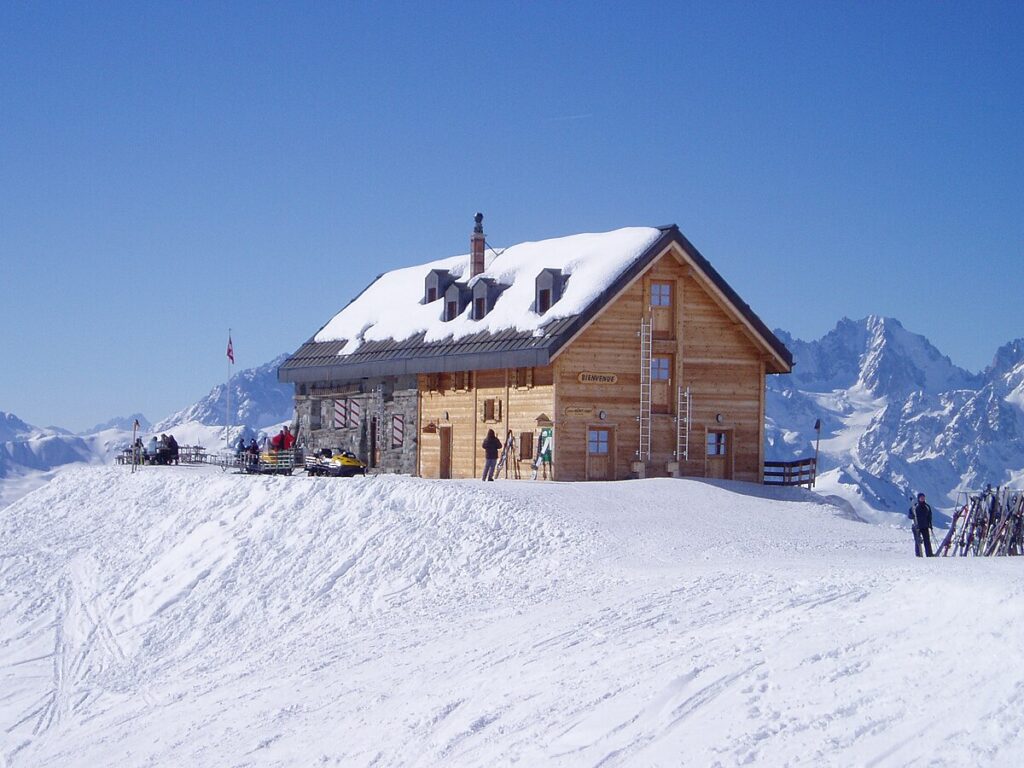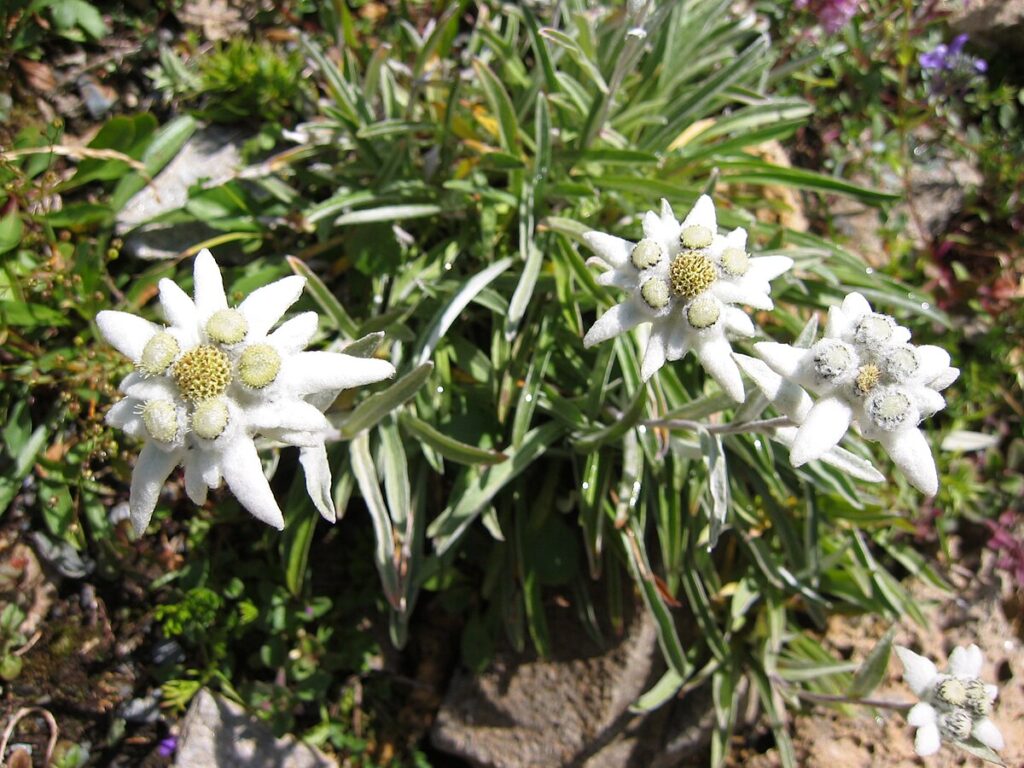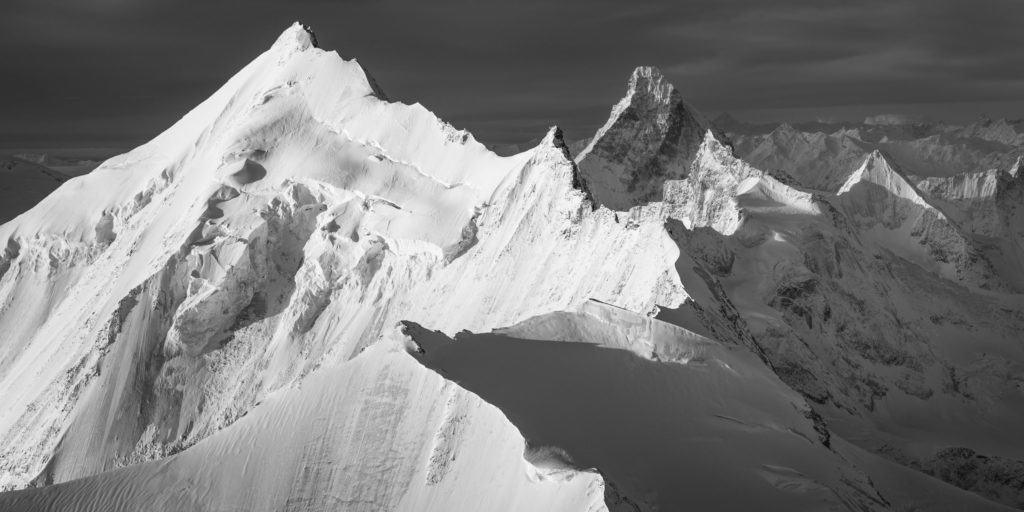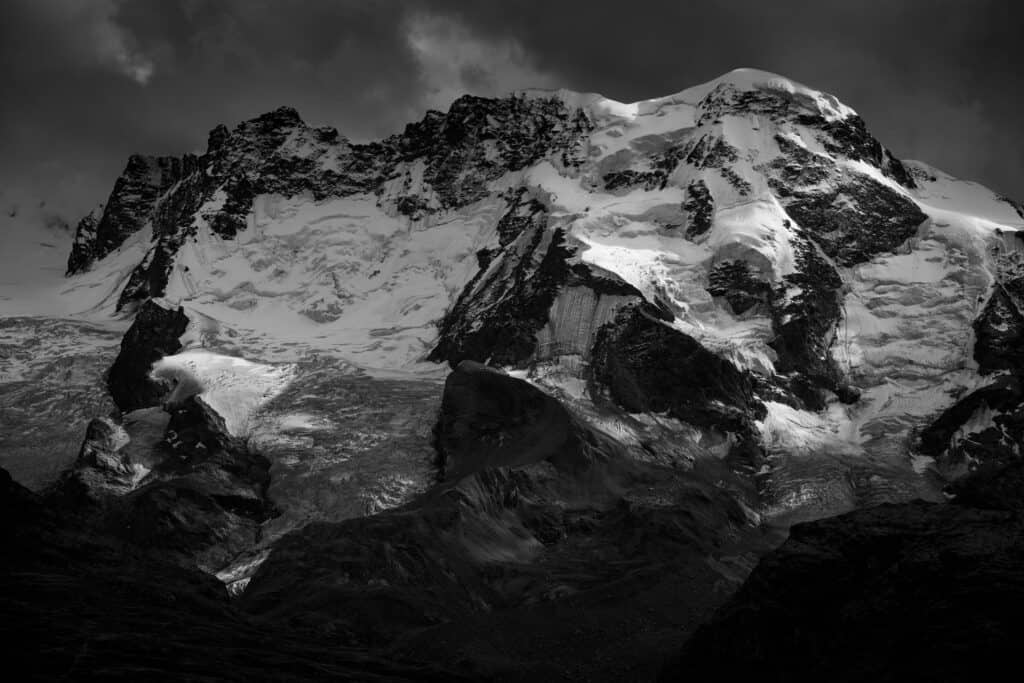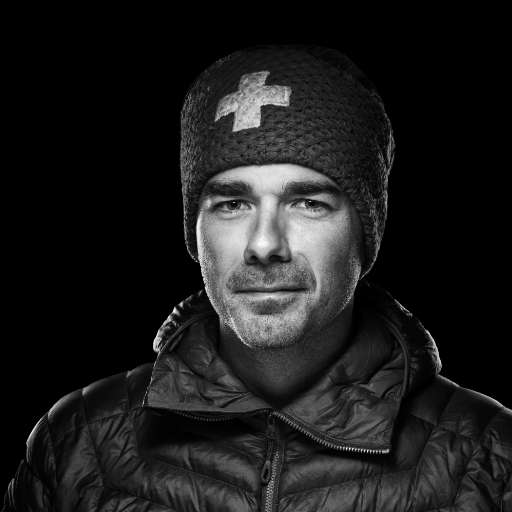Between the peaks and valleys of the Alps, an exceptional route is carved out. An authentic link between Mont Blanc and the Matterhorn, the Haute Route Chamonix-Zermatt emerges from the glaciers. But do you know the history of this legendary crossing? Did you know that there are several routes to Zermatt ? This route, often marked out by several days of mountain skiing, awakens in us the wind of freedom and the taste for surpassing oneself. I tell you the story of the Haute Route Chamonix-Zermatt and reveal its main routes.
History of the Haute Route Chamonix-Zermatt | Conquering a prestigious route
Michel Payot, a child of the peaks of Chamonix and one of the 20th century's leading physicians, saw his life take a new course when he first used skis. While these wooden slats became a veritable means of locomotion in Scandinavian countries, Michel Payot breathed a unique destiny into them. That of an intermediary instrument dedicated to saving lives. Like a warrior on horseback on a battlefield, Michel Payot takes on the mountains, braving the snow, the cold and the vagaries of the weather. He stops at nothing to travel to the most remote corners of the Chamonix valley to treat his patients.
This is how the doctor became the symbol of the emergence of skiing in the Alps.
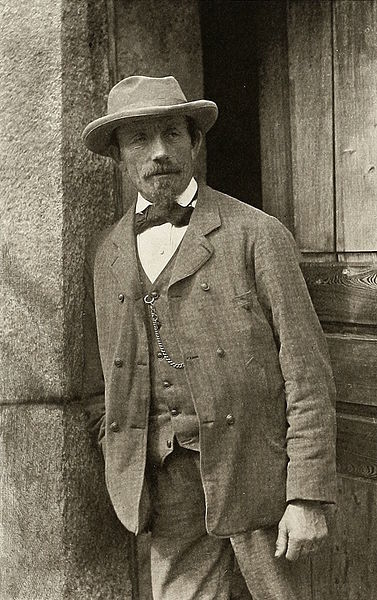
His attention is always focused on his parabolic boards, which have become a true ally of the mountaineer. An ambitious project was born in Michel Payot's mind: that of tracing a path to Zermatt, winding through the majestic summits of the Alps.
With his mind made up, the Chamonix-born climber took up his challenge and surrounded himself with his rope-mates: Joseph Couttet, Joseph Ravanel (known as Ravanel le Rouge because of his flamboyant hair) and Alfred Simond.
Equipped with the gear of yesteryear, the mountaineers set off on their journey. Sealskins carefully nailed to 2-meter-long skis, a 10-kilogram camera and a pair of snowshoes to tackle the most hostile terrain. With their 1.80-meter poles, the faithful guardians of mountaineers and precursors of the ice axe contemporary, the team set off from the village of Chamonix, ready to challenge the Alpine skies.
Saturday January 17, 1903, the first day of the traverse. The team awakes from its slumber and climbs the Col du Chardonnet in temperatures approaching -20 degrees. The four determined climbers continue on their way: Saleinaz glacier, Saleinaz window, Orsières, before spending the night at the Orny hut. Here, far from the crowds, the mountains reveal themselves in all their splendour. A unique creation that nature offers to these solitary pilgrims.
But there's no room for daydreaming, as the man is suddenly called back to reality. That of the opening of a road that no one else has yet dared to attempt. The reality of a terrain where every step sinks into deep snow. The reality of a mountain capable of burying a body in an avalanche, or engulfing a mountaineer in the abyss of untamed nature.
One day follows another, each sunrise bringing the comrades closer to their ultimate goal: Zermatt. They rope up, then un-rope. They put on and take off their skis. Sometimes embraced by fog, sometimes moving under the bright rays of the sun. Lack of visibility forced them to spend an extra night at the Chanrion hut on the third day.
Wednesday January 21, 1903, last day of the Chamonix-Zermatt crossing. The team, exhausted and hungry, let Ravanel le Rouge, with his infallible sense of direction, take the lead on this last leg. Night falls. The team struggles through the forest, before Zermatt takes shape before their eyes. Victory! The parish priest is waiting for them at a small inn, ready to take care of this valiant team. And so it was that these mountaineering pioneers mapped out one of the world's most legendary ski-mountain routes.
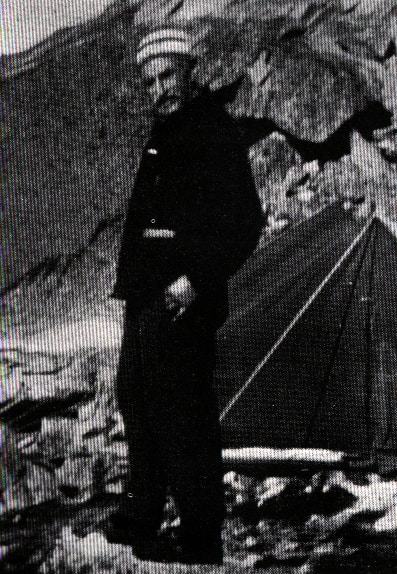
Classic Haute Route Chamonix-Zermatt | An odyssey in the heart of the Alps
Like roots branching out in search of nourishing soil, the Haute Route unfurls its multiple itineraries to feed the desires of mountaineers. From the classic to the more demanding variants, each skier chooses his or her own path leading to the ultimate destination: Zermatt.
The classic route is undoubtedly the most popular with mountain adventurers. It stretches over 6490 meters of positive vertical drop, covered on average over 5 days. The presence of a mountain guide is of crucial importance here.

Day 1: Col des Grands Montets - Cabane du Trient. A positive altitude difference of 1150 metres. The journey begins at the Col des Grands Montets. Up there, theAiguille Verte rises majestically, adorned in its snowy cap. Behind it, Mont Blanc, undisputed sovereign of the French Alps, gazes down on us like stardust in the midst of the Alpine atmosphere. However, our gaze turns in the opposite direction: towards the Col du Chardonnet. Once over the pass, a final ascent to the Saleina window, then the Trient hut appears in the distance.
Day 2: Cabane du Trient - Cabane Valsorey. An ascent of 2220 meters. From the Cabane du Trient, the route takes us first to Champex. A testament to great hospitality, this hamlet has forged a warm soul over more than a century for anyone who visits. Like a "little Swiss Canada", the forests spread their arms across the Valais. While the lake, ice-covered in winter, seems to capture the spirit of northern lands. A shuttle awaits us in this village, ready to take us to Bourg Saint-Pierre. From here, a final effort is required before the Cabane de Valsorey emerges on its rocky islet.
Day 3: Cabane Valsorey - Cabane Chanrion. An ascent of 950 meters. As we leave Cabane Valsorey, we climb up the couloir leading to the plateau. At around 3300 meters altitude, the slope becomes steeper, with passages at 40-45 degrees. From the plateau, the view of Mont Vélan is enchanting. It's hard not to be touched by the peacefulness that reigns over these peaks. The path then leads us to the Col du Sonadon. Then the final stage of the day takes shape. We descend to the Chanrion hut via the Mont Durand glacier. From the hut, the Combins massif rises in majesty. The Lac de Mauvoisin sublimates this mountain backdrop. The celestial kingdom takes us on a timeless journey.
Day 4: Cabane de Chanrion - Cabane des Vignettes. A positive altitude difference of 1456 metres. The Haute Route takes us to the Breney glacier in the heart of Val de Bagnes. And in this white temple, the powerful fragility of the mountain awakens. Seracs, those immense blocks of ice that break off when they hit the mountain floor with full force, burst out of the earth. They explode, shattering the silence of the peaks. These roars are becoming increasingly frequent as a result of global warming. Venturing onto a glacier today is far more dangerous than it was in Michel Payot's day. Part of the kingdom above is crumbling. That's why, as a photographer of the Alps, I capture this age-old ice that is gradually disappearing. In a few years' time, my artistic creations will become an archive of a mountain immaculately white for future generations to inherit. But now let's leave this desert of craters to reach the Pigne d'Arolla. Then, one last pass needs to be crossed before staying at the Cabane des Vignettes.
Day 5: Cabane des Vignettes - Zermatt. A positive altitude difference of 1500 metres. We cross four passes in succession: Charmotane, Evèque, Mont Brulé and Valpelline. Then the descent to Zermatt awaits us. Finally, the Matterhorn rises up in front of us, its pyramidal silhouette eternal and sumptuous. The Matterhorn stands alone, above the valleys, as king of the Swiss Alps. And in this celestial kingdom, it reigns elegantly, proclaiming its infinite power.
The Chamonix-Zermatt crossing is coming to an end. But the memories that the Haute Route inscribes in the minds of every mountaineer who has travelled it will resonate forever.
Crossing variants Chamonix-Zermatt | Verbier and Italian itineraries
The Haute Route Chamonix-Zermatt is enchanting for the diversity of its variants. I'd like to introduce you to the one via Verbier. The route avoids the Plateau du Couloir, a demanding stage of the traverse. The panorama from Verbier is splendid, offering a 360-degree view of the finest 4000m peaks in the Alps. If you're interested in this variant, follow the same route as the classic to Champex. From here, the routes separate. The route leads to the Mont Fort hut, then to the Cabane des Dix in the Val d'Hérémence. From here, the Banc de Cheilon rises like a Himalayan giant. Its vertiginous faces and suspended glaciers fascinate me. It was in front of this refuge that I felt the call to become a high-mountain photographer. To put my art at the service of the Alps. To pass on the legacy of the world above to future generations.
There are also variants on the Italian side, revealing the high mountains in all their authenticity. The stages are longer and more technical, and these routes require solid mountaineering experience. Here's one of the routes through the Valais and Pennine Alps. It starts at summit de l'Aiguille du Midi, and requires a commitment of 8 days with a total of 11500 meters of positive altitude difference. If you'd like to discover this route, there are a number of topos, such as the Ski Tour, which describe it in detail. Here, the reality of the high mountains is revealed, a world where pushing one's limits becomes the norm. Where nature dictates its own laws. A harsh world where man is but an atom aspiring to scale giants of rock and ice.
American mountaineer Ed Viesturs once said: "Altitude is freedom". The Haute Route Chamonix-Zermatt, like a thread of white gold linking the two Alpine capitals, is a hymn to freedom. Far removed from the meanders of everyday life, it conveys the flavour of simplicity and the aroma of lightness of heart.





